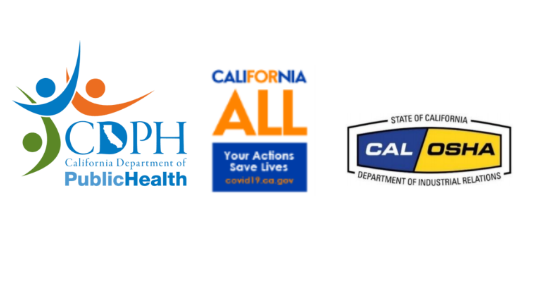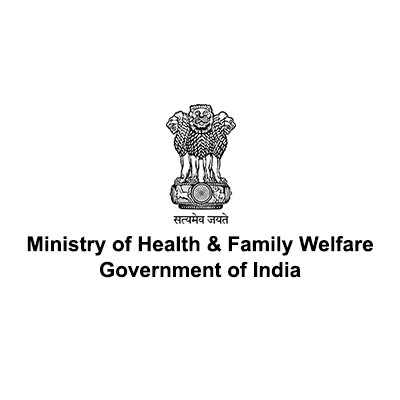Title Page
-
Conducted on
-
Prepared by
-
Location
-
This checklist of operational procedures is based upon guidance issued by WHO (World Health Organisation), the source of the check can be found here:
https://www.satsa.com/wp-content/uploads/WHO-2019-nCoV-Hotels-2020.1-eng.pdf
Management Team
Action Plan
-
The Management Team, in consultation with local health authority, Hotel, Restaurant, Catering, and Tourism administration and industry associations should establish an action plan tailored to the situation and implement it in accordance with the recommendations of local and national public health authorities.
-
The plan, which may incorporate teleworking, should be updated when necessary as a consequence of new guidance, procedures, or regulations issued by the pertinent authorities.
Mobilisation of Resources
-
The Management Team should make sufficient human and economic resources available to ensure that the action plan can be implemented rapidly and effectively.
-
The action plan should also include the provision of equipment and procedures, developed in collaboration with local health authorities, for the management of suspected case(s) and their possible contacts.
Supervision
-
The implementation of the action plan and the effectiveness of the measures undertaken should be evaluated frequently to verify compliance, identify and correct gaps, and adapt the plan to practical experience.
-
A Crisis Team involving members of each relevant department should support Management in the implementation of the action plan and timely identification of required adjustments.
-
The Management Team should be alert to any unusual rise in worker absenteeism, especially those due to acute respiratory infections,<br>possibly caused by COVID-19.
Logbook of Actions
-
It is advisable to keep a logbook of the important actions and measures carried out and to record them in enough detail (e.g. including date and time a disinfectant was used, by whom, where, etc.). This logbook can be used to improve the actions implemented.
Communication
-
Communication should be maintained between Management and staff, including through the managers in charge of the different departments, in order to predefine an information policy for guests as well as to rapidly provide and obtain information on incidents that<br>may arise in the establishment and to know the status of the situation at all times.
-
Guidelines should be provided to the staff on how they should communicate the action plan to guests and other stakeholders.
-
Short documents or informative posters are on show to amplify the key messages among guests and staff, including the promotion of hand-washing (at least 20 seconds, all parts of the hand), respiratory hygiene, and coughing etiquette.
-
Official leaflets on basic hygiene practice and COVID-19 are available in different languages.
-
An up-to-date list of the contact information of the staff, including emergency telephone numbers, is available.
Training and Information
-
Management should inform all staff of the measures to be adopted and the measures that could protect their health and that of others, including the recommendation to stay home and seek medical attention if they have respiratory symptoms, such as coughing or shortness of breath.
-
Management should organize information briefings that should cover all the basic protective measures against COVID-19 and the signs and symptoms of the disease. Training may be needed for specific procedures.
Reception and Concierge
Information and Communication
-
Reception desk staff should be sufficiently informed about COVID-19 so that they can safely carry out their assigned tasks and prevent the possible spread of COVID-19 within the establishment.
-
They should be capable of informing guests who inquire about the establishment’s policy in terms of the preventive measures established or other services that guests may require (for example, medical and pharmacy services available in the area or at the establishment itself).
-
They should be able to advise guests with respiratory symptoms to stay in their rooms until they are seen by a doctor—management should arrange it immediately.
-
They should provide basic hygiene recommendations when asked.
-
Reception desk staff, if possible, should not be older or with underlying health conditions.
-
Reception desk staff must take all necessary precautions, including physical distancing.
-
Official, up-to-date information should be available about travel to and from countries or areas where COVID-19 is spreading.
-
Reception Desk staff should be familiar with the room occupancy policy for accompanying persons in the event of a suspected case of COVID-19
-
The reception desk should have immediately available the telephone numbers of the health authorities, medical centres, public and private hospitals, and assistance centres for use whenever there is the possibility that a guest may be ill.
Necessary Equipment and Medical Kit for Reception Desks
-
The reception desk should have a medical kit that<br>includes the following items:<br><br>• Germicidal disinfectant/wipes for surface cleaning tissues.<br>• Face/eye masks (separate or combined, face shield, goggles). Note that disposable face masks can only be used once (see Advice on the use of mask).<br>• Gloves (disposable)<br>• Protective apron (disposable)<br>• Full-length long-sleeved gown<br>• Biohazard disposable waste bag
Social Distancing Measures
-
As a form of hospitality, guests should be reminded that social distancing includes refraining from hugging, kissing, or shaking hands with guests as well as among staff. It involves maintaining a distance of at least 1 m (3 ft) and avoiding anyone who is coughing or sneezing.
Hand Hygiene
-
Staff should be diligent with hand hygiene by regularly and thoroughly cleaning hands with an alcohol-based hand rub or washing them with soap and water.
-
Hand disinfection is conducted after exchanging objects (money, credit cards) with guests.
-
Reception staff should avoid touching eyes, nose, and mouth.
Respiratory Etiquette
-
Staff should cover mouth and nose with bent elbow or tissue when coughing or sneezing.
-
Used tissue should be disposed of immediately in a bin with a lid.
Monitoring of guests who are possibly ill
-
Reception staff should monitor potentially ill guests by noting all relevant incidents that come to their knowledge through a guest questionnaire. This information will aid guests through appropriate advice, facilitating early detection, and rapid management of suspected cases with local health authorities.
-
Reception staff must treat all this information with discretion, leaving it up to the management and to medical services to evaluate the situation and make appropriate decisions. Staff must observe regulations in relation to the protection of personal data and the right to privacy.
Technical and Maintenance Services
Water Disinfection
-
It is necessary to maintain the concentration of disinfectant in water for consumption and in pools or spas within the limits recommended according to international norms and standards, preferably at the upper limits of the range.
Dishwashing and Laundry Equipment
-
The proper functioning of the dishwashing and laundry equipment should be checked, particularly the operating temperatures, as well as the correct dosage of cleaning and disinfecting chemicals.
Air-Conditioning
-
Attention should be given to monitoring the condition of filters and maintaining the proper replacement rate of indoor air.
-
The proper functioning of ventilation, air exchange, and dehumidification equipment of covered pools should be checked.
Dispensers
-
Regular checks should be carried out to ensure the proper functioning of soap and disinfectant solution dispensers, hand dryers, disposable tissue dispensers, and other similar devices.
-
Defective units should be rapidly repaired or replaced.
-
The hotel action plan should include installing units to dispense disinfectant gel in the different areas of the hotel, including the public restrooms used by guests and by staff, and other areas of interest (e.g. entrance to the dining hall, restaurants, and bars).
Restaurants, Dining Rooms and Bars
Information and Communication
-
Restaurants, breakfast, and dining room and bar staff should perform personal hygiene (frequent regular handwashing, cough hygiene) as strictly as possible.
-
Guests should be reminded when entering and leaving the restaurant, breakfast, or dining room to disinfect their hands with disinfectant gel, preferably located at the entrance to those facilities.
Buffets
-
At the buffets, guests should avoid handling food.
-
Tongs and ladles should be changed more frequently, always leaving these items in separate containers.
-
Buffet surfaces should be cleaned and disinfected after every service.
-
The coffee machines, soda machines, and others, in particular the parts more in contact with the hands of users, should be cleaned and disinfected at least after each service and more often if necessary.
Washing Dishes, Silverware, and Table Linen
-
All dishes, silverware, and glassware should be washed and disinfected in a dishwashing machine, including items that have not been used, as they might have been in contact with the hands of guests or staff.
-
If for any reason manual washing is required, the usual steps should be followed (wash, disinfect, rinse), taking the maximum level of precautions.
-
Drying should be carried out using disposable paper towels.
-
Tablecloths and napkins should be washed in the usual manner.
Table Setting
-
Whenever possible, it is recommended to have a maximum of 4 persons for 10 square metres.
-
Tables should be arranged such that the distance from the back of one chair to the back of another chair should be more than 1 m<br>apart and that guests face each other from a distance of at least 1 m.
Cleaning and Housekeeping
Cleaning and Disinfection
-
Special consideration should be given to the application of cleaning and disinfection measures in common areas (restrooms, halls, corridors, lifts, etc.) as a general preventive measure during the entire COVID-19 epidemic.
-
Special attention should be given to objects that are frequently touched such as handles, elevator buttons, handrails, switches, doorknobs, etc. Cleaning staff should be instructed accordingly.
-
There should be a special cleaning and disinfection plan for situations in which there are sick guests or employees staying at the establishment or identified with COVID-19 within a few days after leaving the establishment.
-
Written recommendations for enhanced cleaning and disinfection should describe the enhanced operating procedures for cleaning, managing solid waste, and for wearing personal protective equipment (PPE).
Cleaning and Disinfection of Rooms or Areas Exposed to COVID-19
-
Any surfaces that become soiled with respiratory secretions or other body fluids of the ill person(s), e.g. toilet, handwashing basins, and baths should be cleaned with a regular household disinfectant solution containing 0.1% sodium hypochlorite (that is, equivalent to 1000 ppm).
-
Surfaces should be rinsed with clean water after 10 minutes contact time for chlorine.
-
Service staff may require additional training in the preparation, handling, application, and storage of these products, mostly bleach, which may be at a higher concentration that usual. The cleaning staff should know how to make sure the bleach is not disintegrated and how to rinse it off after 10 minutes.
-
When use of bleach is not suitable, e.g. telephone, remote control equipment, door handlings, buttons in the elevator, etc. then alcohol 70% could be used.
-
Whenever possible, use only disposable cleaning materials. Discard any cleaning equipment made of cloths and absorbent materials, e.g. mophead and wiping cloths.
-
When pertinent, disinfect properly non-porous cleaning materials with 0.5% sodium hypochlorite solution or according to manufacturer’s instructions before using for other rooms.
-
Textiles, linens, and clothes should be put in special, marked laundry bags and handled carefully to prevent raising dust, with consequent potential contamination of surrounding surfaces or people.
-
Instructions should be given for washing them in hot cycles (70ºC or more) with the usual detergents.
-
All used items must be handled appropriately to mitigate the risk of potential transmission. Disposable items (hand towels, gloves, masks, tissues) should be placed in a container with a lid and disposed of according to the hotel action plan and national regulations for waste management.
-
In general, public areas where a case has passed through or has spent minimal time in (corridors) do not need to be specially cleaned and disinfected.
-
Cleaning crews should be trained on use of PPE and hand hygiene immediately after removing the PPE, and when cleaning and disinfection work is completed.
-
All rooms and common areas should be ventilated daily.
Monitoring of Sick Guests
-
Housekeeping and cleaning staff should inform the management or the reception desk of any pertinent incidents, including possibly sick guests in their rooms. They must treat all this information with discretion.
Availability of Materials
-
Cleaning staff should be trained on the use of and provided with personal protection equipment as listed below:<br><br>- Gloves<br>- Disposable gowns<br>- Closed shoes<br>- If doing procedures that generate splashes (e.g. while washing surfaces), add facial protection with a face shield and impermeable aprons.<br><br>They should also have access to sufficient disinfectant solutions and other supplies.
Optional Housekeeping Programmes
-
All programmes where guests can voluntarily forego housekeeping services should be suspended in the service of maximizing health and safety of hotel staff and guests alike.
Handling COVID-19 Cases in Hotels and Tourism Accommodation Establishments
General Recommendations
-
If a guest or staff develops symptoms of acute respiratory infection, efforts should immediately be made to minimize contact of the ill person with all guests and staff of the establishment. Reception or other hotel staff should follow the procedures in the action plan for the situation when a guest develops signs and symptoms indicative of COVID-19.
-
Staff who report from home that they have been diagnosed with COVID-19 should follow the instructions received from the doctor, including the recommendation of self-isolation at home until the symptoms have completely disappeared (Note: For a COVID-19 patient to go through a mild form of the disease and fully recover takes about one month).
Case of an Affected Guest
-
If the person affected is a guest of the tourism accommodation establishment, continued stay of the sick person in the establishment is not recommended.
-
The person can be isolated in a room on a temporary basis until the intervention of local health authorities, and provided the room is not shared with other guests, except in the case of children or persons requiring caretakers.
-
Depending on the availability of rooms, accompanying persons, if any, should be moved to a different room.
-
No visitors should be permitted to enter the room occupied by the affected guest.
-
If there is no other option but to keep a sick guest suspected of COVID-19, with mild symptoms, self-isolation in the room should be considered. Doctor’s visits should be carried out in the sick person’s room whenever possible, avoiding the need for the patient to go to the doctor’s office.
-
The guest should receive food in the room.
-
Sick persons should not share a bathroom with other persons, and neither should they share towels, blankets, or any type of clothing with their caretakers.
-
Caretakers must adopt strict precautionary measures, including wearing PPE, whenever they come close to or has direct contact with the sick person. The room should then be organized to allow for proper dressing of PPE and, in a separate area, for disposal of used/contaminated PPE.
-
Only one person should be in charge of caring for the sick person. Pregnant women or other persons with high risk of developing severe disease caused by COVID-19 should not serve as caretakers.
-
Caretakers should self-monitor for the appearance of symptoms, especially fever and cough, and receive medical attention if such symptoms appear.
-
The doctor in charge of the case should provide relatives and accompanying persons with information regarding the infection control measures they should adopt
-
The clothing of the sick patient, as well as the linen of the room he or she occupies, should be washed following the usual procedures. As a precautionary measure, these items should be stored and transported in sealed bags.
-
Note: The management of the hotel and tourism accommodation establishment has no authority to force sick guests to temporarily remain in their room or to prevent them from receiving visits from other guests.
Evacuation of Suspected Cases
-
In order to minimise the risk of contaminating other guests or members of the staff, symptomatic guests should leave the hotel according to instructions from the management of the establishment and local health authority.
-
Management of the possible contacts of the sick guest should take place in accordance with instructions from the local public health authority. The local health authority should rapidly update the regional or national health authority on the outcome of examinations and if further actions must be taken.
-
Staff involved in the transportation of the suspected case should apply infection prevention and control practices according to WHO guidance. They should routinely perform hand hygiene and wear a medical mask, eye protection, gloves, and gown when loading suspected COVID-19 patients for transport in the ambulance. They should ensure that they clean their hands before putting on PPE and after removing it.
-
If more than one suspected case is being transported, personnel and health personnel should change their PPE between each patient to avoid possible cross-contamination between suspected, but not confirmed, cases of COVID-19. They should dispose of the used PPE appropriately in containers with a lid in accordance with the hotel action plan and national regulations for infectious waste.
-
The hotel management should provide access to services for cleaning and disinfection of the room occupied by the sick person in accordance with action plan, following the cleaning and disinfection protocols for rooms with cases. In case that this is not possible, the on-duty housekeeper should be instructed to clean and disinfect the room occupied by the sick person, following the cleaning and disinfection protocols for rooms with cases and observing personal protective measures.
Identification and Management of Contacts
-
Identification of contacts should begin immediately after a suspected case has been identified in the establishment.
-
WHO defines a contact as a person who experienced any one of the following exposures during the 2 days before and the 14 days after the onset of symptoms of a probable or confirmed case:
• Face-to-face contact with a probable or confirmed case within 1 meter and for more than 15 minutes;
• Direct physical contact with a probable or confirmed case;
• Direct care for a patient with probable or confirmed COVID-19 disease without using proper personal protective equipment; OR
• Other situations as indicated by local risk assessments.
In the context of a hotel and tourism accommodation establishment, a contact could be considered as:
• Guest companions or persons providing care who had close contact with the suspected case;
• The staff member designated to look after the ill persons, and other staff members who may have been in close contact with the ill persons or the facilities they use (e.g. bathroom) or their usual articles (e.g. used linen and clothes). -
If the severity of the symptoms or numerous movements of the case(s) indicate more extensive exposure in the establishment, a more thorough assessment should be done together with the local health authorities.
-
WHO recommends that all contacts of COVID-19 patients be quarantined for 14 days from the last time they were<br>exposed to the patient. If a contact develops symptoms, the contact should wear a medical mask, considered as suspect case, and treated as such.
-
Other guest and staff who do not meet the definition of a contact may be considered as having low-risk exposure and may be advised to implement precautionary measures. These precautionary measures can be modified and adapted to the risk assessments conducted by the public health authorities.
Non-affected Guests
-
Non-affected guests are persons considered to have had a low-risk exposure. They should be provided with information about the disease, it's transmission, and preventive measures.
-
They should be asked to self-monitor for COVID-19 symptoms, including fever, cough, or difficulty breathing for 14 days from the date of departure of the confirmed case from the establishment. Should they develop symptoms indicative of COVID-19 within 14 days, they should be asked to immediately self-isolate and contact local health services.
Suppliers of Goods and Services
-
Contractors and suppliers of goods and services should follow safe systems of work and also have systems in place for the prevention of the spread of COVID-19.












